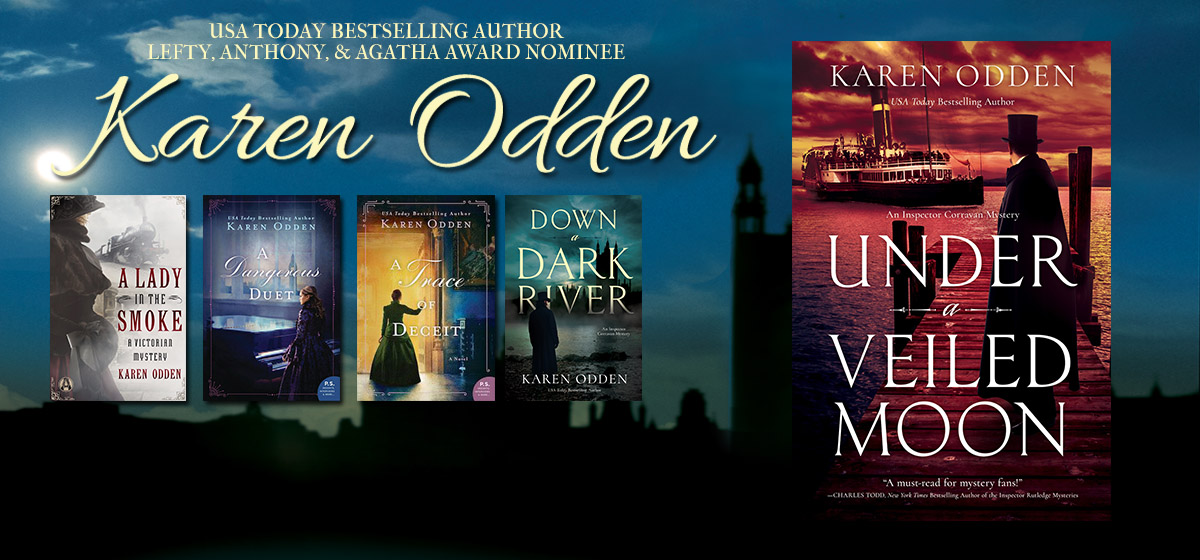Answer: 4.
Most people think of Scotland Yard as the elite organization within the Metropolitan Police. But in the autumn of 1877, Chief Inspectors Nathaniel Druscovich, William Palmer, and George Clark, and Inspector John Meiklejohn were all put on trial for corruption and fraud–specifically, taking bribes, colluding with a trio of con men, and even helping them escape.
The London papers followed the scandal avidly, trumpeting headlines about the “TRIAL OF THE DETECTIVES” at the Old Bailey, which lasted nearly a month (24 October -20 November 1877) and provoked huge public interest … and outrage. Three inspectors were convicted and sentenced to two years of hard labor; Clarke was acquitted, but he quit the Yard immediately afterward.
The worst of it was that these four men weren’t rookie detective-inspectors. Among them, they had 88 years of experience … which makes you wonder what else they’d been up to over the years.
The scheme began (much like the railway fraud schemes of the 1840s) with an ad in a newspaper. A convicted forger named Benson was released from prison in 1876 and contacted two brothers named Kerr. Together they created a newspaper, Le Sport, which would circulate in France and recommend to its readers a betting man named Mr. Montgomery, who claimed to be so good at picking horses in the races that the bookies would no longer accept his bets at fair odds. (Anyone sensing a scam here yet?) He was looking for people to place bets for him; and through a complicated back-and-forth with cheques, the con men ended up with legitimate tender, and the victims of the fraud ended up with worthless cheques.
An unsuspecting Frenchwoman, Countess de Goncourt, sent “Mr. Montgomery” £10,120 pounds–and was preparing to send him another 30,000 pounds, except that her suspicious banker warned that she was being duped. She came to England and put the matter in the hands of a trustworthy solicitor, who took her tale to Scotland Yard. Now, Benson and the Kerr brothers had taken up a primary residence on Northumberland Street, the Strand. When they were discovered and the warrants drawn up, it was the inspectors’ duty to arrest them … but Mickeljohn had known William Kerr for years, Druscovich owed the Kerrs £60, and the inspectors had all been well paid to look the other way. So instead, “Kerr and his friends bade the officers a friendly farewell, and departed in various directions,” as was reported in one of the papers. Eventually the criminals were caught trying to flee the country, and the four Inspectors accused.
What was the fallout for the Yard?
As you’d expect, the public’s trust in the Yard was pretty well shredded, and Parliament directed a Departmental Commission on the State, Discipline, and Organisation of the Detective Force of the Metropolitan Police (the Victorians loved their long committee names) to embark upon a two-month investigation, after which the Yard was reorganized into the Criminal Investigation Department (notice how the dirtied word “detective” does not appear in this new name) under a new director, C.E. Howard Vincent, in 1878.
Director Vincent was an unusual choice, for he had never worn a police uniform and never solved a case. He was a second son of a baronet, well educated, and a former newspaperman, of all things. He had visited Paris to study the police department there, and Parliament thought that would be a good foundation for the new CID. Vincent was a new broom that swept the Yard pretty clean.

People often ask me where I get my ideas for books. When I heard about the Turf Fraud Scandal and the Trial of the Detectives, I thought … what if there were an inspector who had to cope with the aftermath, who had to try to solve a case when the public and the newspapers were ready to pounce on his every error?
Down a Dark River begins in March 1878, only a few months after this scandal has rocked the Yard. Inspector Michael Corravan is one of the few senior inspectors left, seeing as two of them are in jail. A former thief, bare-knuckles boxer and dock worker, Corravan was raised on the rough streets of Whitechapel–in stark contrast to the polished Director C.E. Howard Vincent. Their complicated but ultimately collaborative relationship is one of my favorites in the book.

